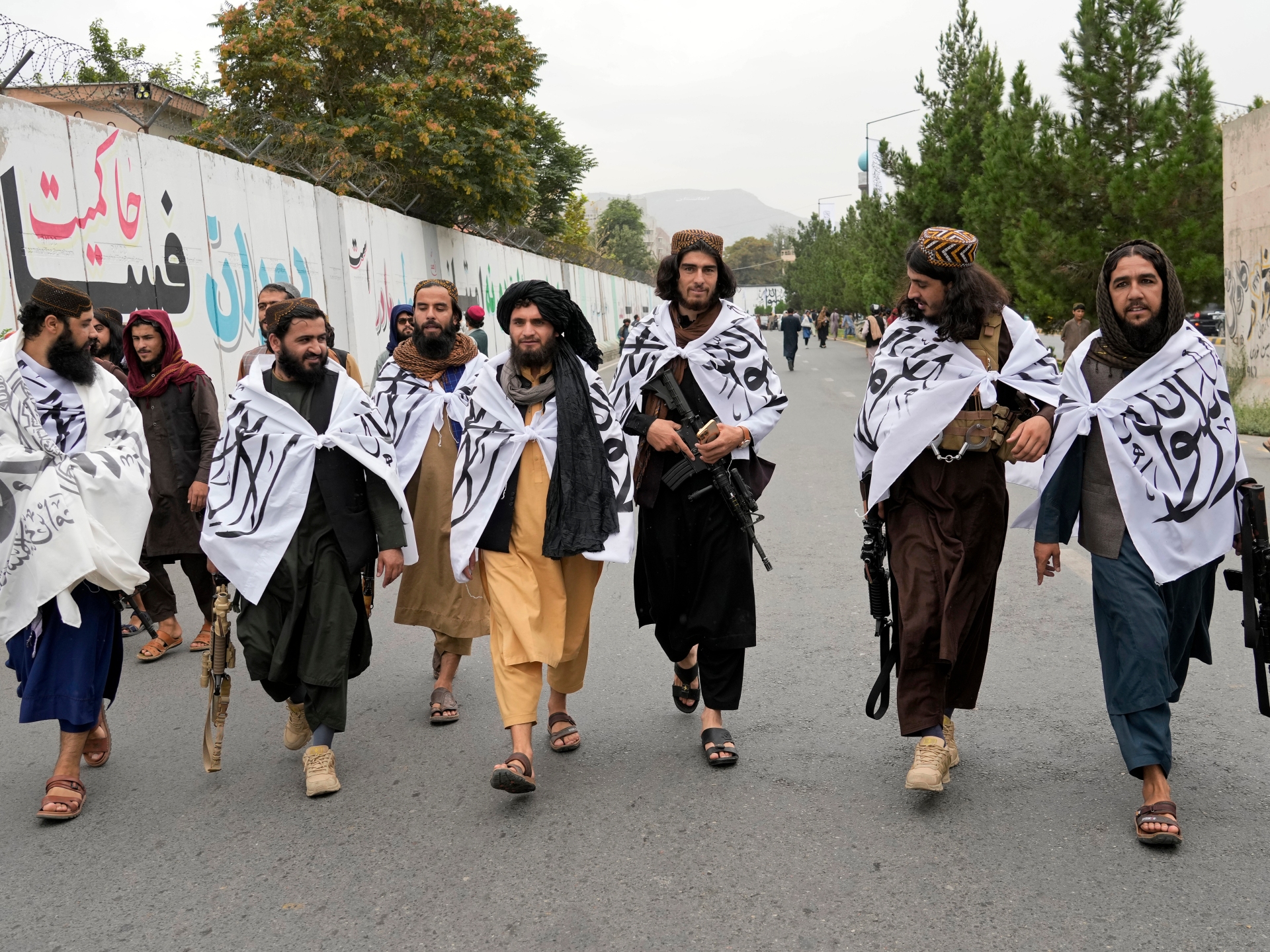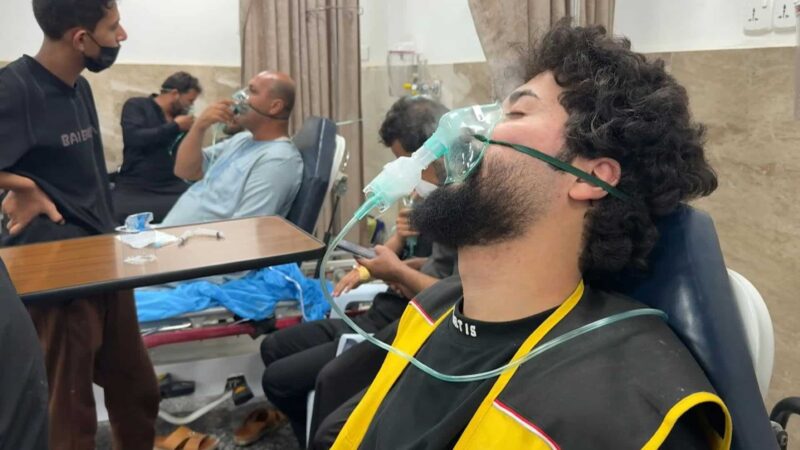The Taliban’s year-one report card

The Taliban’s first year back in power was one of crisis, but they also scored victories that deserve to be acknowledged.
When asked in a recent interview to assess the Taliban’s first year back in power, Afghanistan’s former President Hamid Karzai (2002-2014) delivered a fair summary: the Taliban have brought an “…end to widespread fighting and conflict”, he said but the Afghan people cannot “find themselves” in the government and the “economic situation is disastrous”.
Indeed, in the eyes of many Afghans, the year since the Taliban seized Kabul with little to no resistance has been shaped by a bewildering mix of half-realised hopes, unexpected blessings, many disappointments and devastating economic, social and political crises.
According to the West, however, Afghanistan’s first year back under Taliban rule was marked by just three main events: the chaotic evacuation of Western nationals from Kabul airport; the decree by the Taliban leader to stop girls’ secondary education; and the drone killing of al-Qaeda leader Ayman al-Zawahiri – in a clear violation of Afghanistan’s sovereignty – in a Kabul safe house allegedly owned by the Haqqani network and the Taliban’s interim minister of interior, who is responsible for law and order in the country.
So what exactly were the many gains and undeniable losses and failures of the Taliban during their first year back in power?
US and the Taliban
Given the emphasis the 2020 Doha Agreement – which paved the way for the withdrawal of US-led foreign forces – places on the Taliban’s guarantees that it will not allow transnational armed groups to operate on Afghan soil, many observers concluded that the assassination, which exposed enduring ties between al-Qaeda and the new Afghan leadership, would lead to a total collapse of trust between the US and the Taliban and perhaps even trigger a new military confrontation.
However, the situation is much more complex in reality. To start with, the relationship between the two parties was never built on trust, but on a set of pragmatic interests which both are determined not to abandon even if pursuing them requires turning a blind eye to potential violations of the Doha Agreement.
For this reason, following the assassination, the Taliban refrained from threats and actions that could lead to the total collapse of relations and tried to reassure its constituents merely with relatively measured condemnations. Likewise, the US has been careful not to allow the discovery of al-Zawahiri in Kabul to drastically change its policies towards the Taliban.
Despite appearances, both parties are keen to protect their alignment around the strategic objective of preventing Afghanistan from becoming a failed state that could provide a haven to “terror” organisations such as the ISIL (ISIS) group and a base for the distribution of narcotics to the rest of the world.
A nation hostage
Despite efforts by the Taliban and the US to maintain a delicate relationship, however, in the past year Afghanistan experienced severe economic devastation, largely due to the ongoing efforts by Washington – and the rest of the Western alliance – to prevent the group from further consolidating power through economic pressure.
First came the sudden decline in international aid. Billions of dollars that were used to finance the war effort and to support a wide range of developmental projects, including funding a thriving civil society, in the past two decades have suddenly dried up, causing a sharp rise in unemployment, particularly in the public sector. Almost simultaneously, the country was isolated from the international financial system, which crippled local banking. Adding insult to injury, the US froze almost $9bn in Afghan foreign exchange reserves held abroad and started to float the possibility of using some of that money to compensate the families of 9/11 victims.
As a result of all this, for most Afghans, the first year under the Taliban’s rule has been defined by increased levels of poverty, unemployment (more than one million people lost their jobs), brain drain, uncertainty and loss of confidence in the future.
Although a serious threat of famine was averted last winter thanks to the Taliban’s willingness to cooperate with the international community – which provided the Afghan people with $1bn in humanitarian aid – the country still came to the brink of universal poverty soon after the change of government, with the United Nations Development Programme (UNDP) warning that as much as 97 percent of the Afghan population could sink into poverty before the end of 2022. Incomes dropped so starkly since the Taliban takeover that the World Bank said in April that about 37 percent of Afghan households did not have enough money to cover food while 33 percent could afford food but nothing more. Moreover, given Afghanistan’s dependency on imported food and skyrocketing global food prices due to the war in Ukraine, a deadly famine is still on the cards for Afghanistan.
As a result, while most of this economic devastation was beyond the control of the Taliban, many in Afghanistan – just like those in the West – are struggling to see any positives in the group’s year-one report card.
And yet, the group took some steps – and implemented some policies – that if they did not significantly improve the living conditions of most Afghans, at least helped avert bigger catastrophes.
Acknowledging Taliban achievements
Indeed, the country could not have absorbed the combined effects of the above-mentioned economic shocks if it was not for some of the Taliban’s achievements.
First and foremost, the security situation in Afghanistan has significantly improved since the Taliban’s takeover. After NATO forces left, the Taliban officially ended their armed struggle, declared a general amnesty for all political and military opposition and announced a nationwide decommissioning of weapons. As a result, civilians started to feel safe once again and mobility increased significantly across the country.
By bringing the country under the control of a single authority for the first time in more than 40 years, the Taliban also curbed the influence of local warlords who have been acting above the law and terrorising locals. Kabul and other cities were cleared of the concrete barrier walls that had made certain parts off limits for citizens and caused huge traffic jams. Body searches at the entrances to public buildings were downgraded. All this increased the confidence of Afghans and restored a degree of normality. Of course, these positive developments were not felt by huge segments of the Afghan population, namely women and members of the Hazara minority who continue to find themselves on the receiving end of ISIL (ISIS) attacks.
Second, at the regional level, except for some tensions with Pakistan, the Taliban have managed to maintain good relationships with all of Afghanistan’s neighbours. Despite UN sanctions, for example, China maintains diplomatic and economic relations with the Taliban and has plans to not only provide humanitarian assistance but invest in the country. Uzbekistan also has friendly relations with the new Afghan government and has opened its border to trade. None of the countries in the region is interested in supporting a proxy war in Afghanistan today.
Third, the Taliban managed to protect Afghanistan’s public sector institutions and infrastructure, including its security apparatus. Most public institutions maintained their employees and continued to provide a reasonable level of services. By far the most important institution the Taliban managed to protect was the Central Bank. Under the Taliban, the bank’s acting governor was given a good degree of independence and was allowed to work closely with national and international advisers to protect Afghanistan’s currency. As a result, the local currency was quick to recover much of its value against many international and regional currencies and newly printed bank notes were quickly brought from Poland to circulate in the local market. The Taliban government also managed to recruit almost 100,000 young men to the national army and up to 180,000 to the national police in the past year. Admittedly, many were former Taliban fighters, although not all were.
Fourth, in just a year, the Taliban, having lost international budget support, were able to put forward a national budget dependent only on national income. By tackling the culture of corruption that held the country back over the last 20 years, the Taliban were able to increase state revenue to the unprecedented level of $100 million per month despite the economic difficulties facing the country and the low tax base that this has resulted in.
While these achievements undoubtedly deserve some acknowledgement, it cannot be denied that they have all been overshadowed by the Taliban’s confused and regressive social policies. For example, while girls are still allowed to go to secondary school in several provinces, in most localities their access to education has been restricted to please a minority view within the movement. This combined with the crackdown on liberties, including press freedom, cultural expression (music and dance) and political activism has resulted in many Afghans feeling detached from the Taliban government and becoming wary of its rule. Counterproductive social policies also placed the country on a path to international isolation despite its officials’ occasional ability to participate in regional and international bilateral visits and conferences.
All in all, the Taliban’s year one report card is far from perfect. Nevertheless, the group also had some significant victories against difficult odds in their first year in power that deserve to be acknowledged.
The views expressed in this article are the author’s own and do not necessarily reflect Al Jazeera’s editorial stance.






